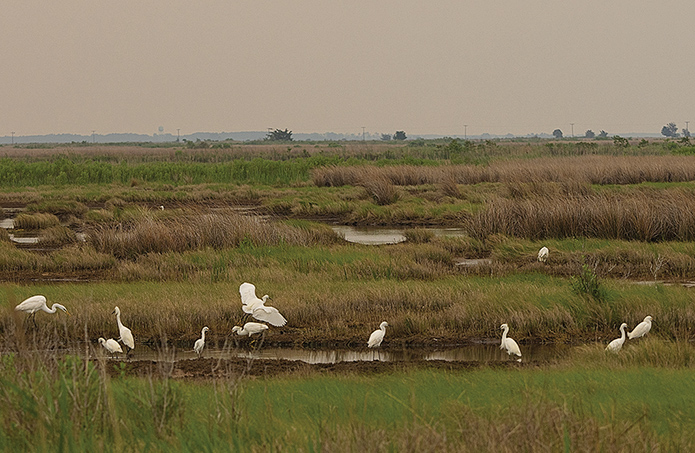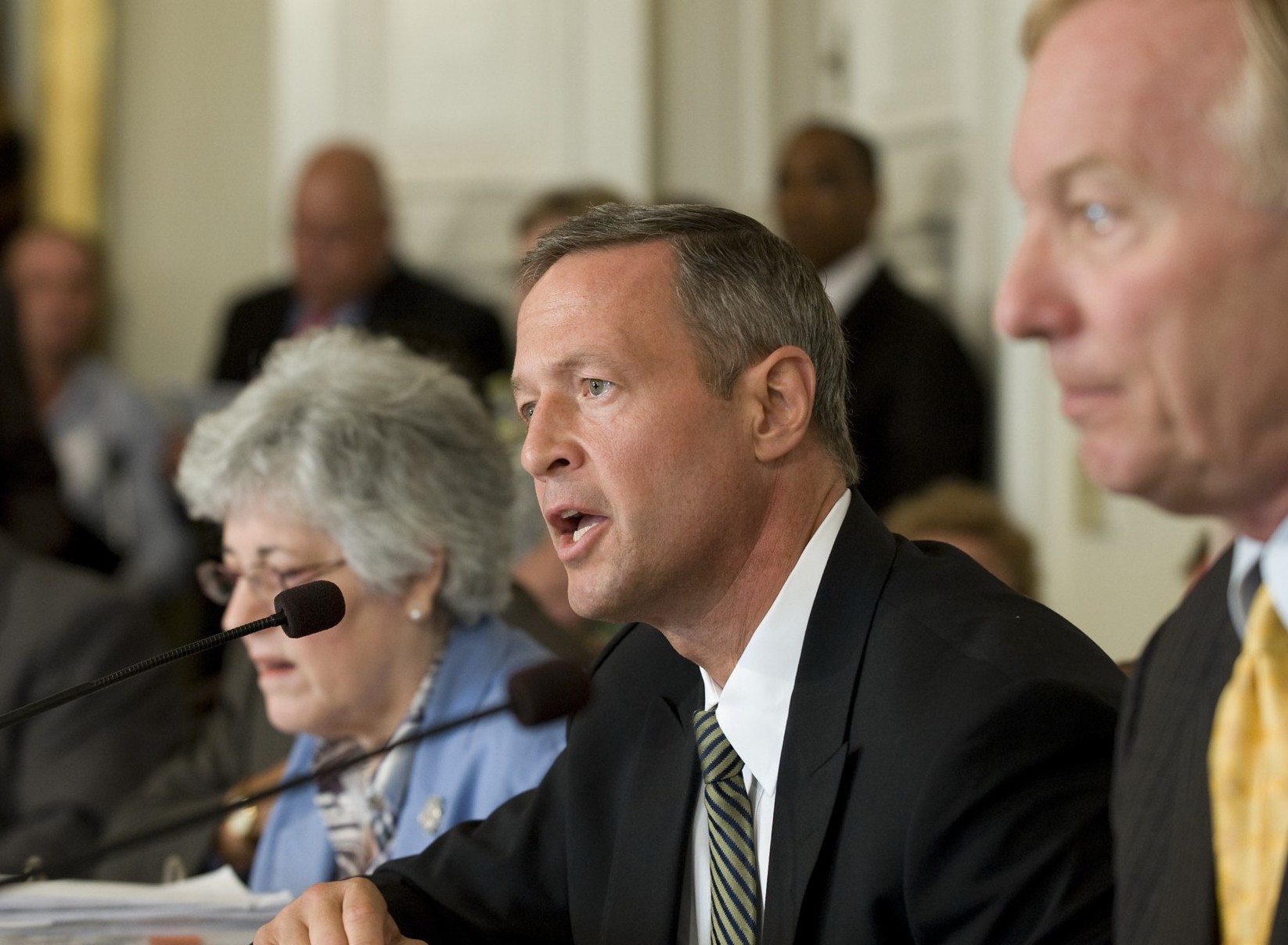By Karl Blankenship
Bay Journal
Congress faces deadlines this Friday to determine how much authority the U.S. Environmental Protection Agency will have to enforce Bay cleanup efforts — and how much money it will have to spend on that work during this fiscal year that began Oct. 1.
A year ago, President Trump proposed eliminating funding for the EPA’s Chesapeake Bay Program, which coordinates regional restoration efforts, monitoring and computer modeling programs, as well as makes grants to states and local governments to help cleanup efforts.
Congress isn’t planning to go along with Trump, but the actual amount the Bay Program will receive has been in limbo for months as lawmakers have passed a series of short-term continuing resolutions rather than a full-year spending plan.
For the full year, the House has approved $60 million, but the Senate is backing $73 million, the same as the previous year. Lawmakers face a March 23 deadline to make a decision.
They also have to decide whether the final spending bill will contain a controversial House-passed amendment that would strip the EPA of its power to act against any Bay watershed state that fails to meet its Chesapeake pollution reduction goals.
Alleged EPA power grab
The amendment, approved by the House last September by a 214 to 197 vote, was introduced by Rep. Bob Goodlatte, R-VA, who said it was needed to prevent a “federal power grab” over the Bay cleanup effort. “It removes the ability of the EPA to take retaliatory or ‘backstop’ actions against the six states located in the Chesapeake Bay watershed if they do not meet EPA-mandated goals,” he said.
The amendment has been strongly condemned by environmental groups, and Maryland Gov. Larry Hogan added his voice to the criticism in February with a letter to Senate Majority Leader Mitch McConnell, R-KY, and Senate Minority Leader Chuck Schumer, D-NY.
Hogan — who chairs the Chesapeake Executive Council, which guides Bay restoration policy — voiced his “strong opposition” to the provision, saying it would harm Bay restoration efforts by preventing the EPA from enforcing “policies and procedures that are necessary for achieving pollution reductions in the Chesapeake Bay Watershed.”
“While I strongly support the multijurisdictional approach to achieving clean water — which is working — it would be unwise to effectively remove the ability of the Clean Water Act to function as designed,” the Republican governor wrote in the Feb. 13 letter. “The Clean Water Act has been one of the key drivers of the cooperative federalism you now see working with great success in the watershed.”
Goodlatte’s amendment would block the EPA from using its regulatory authority to enforce state pollution reduction obligations that were set in the Chesapeake Bay Total Maximum Daily Load. The EPA imposed the TMDL in 2010 after the Bay watershed states had failed to meet voluntary cleanup goals set in previous agreements.
Annual review
The EPA annually reviews each of the six Bay watershed states’ efforts to reduce nutrient and sediment pollution as called for in the 2010 plan.
If any state fails to meet its milestones and hasn’t done enough to get on track, agency officials have warned that they’ll take backstop actions. Those can range from withholding federal funds to imposing regulations on smaller farm animal operations or tightening discharge limits for wastewater treatment plants.
The agency has twice temporarily withheld funds from Pennsylvania because of its shortfalls.
“We need to have an interstate umpire,” said Maryland Environment Secretary Ben Grumbles. “We need to have the EPA very much engaged, and hopefully, that provision that passed the House will not get traction.”
Grumbles called the amendment “inappropriate Congressional interference” in the Bay effort and said Hogan’s letter reflects the view of other states in the watershed.
“States have different views and different perspectives,” he said, “but all of the states have been supportive of the TMDL moving forward and recognize that the EPA has an important role to play in it.”
In his letter, Hogan also said he was “pleased” that Senate appropriators were supporting “full funding for the Bay” as it entered negotiations with the House, which included $73 million for the Bay Program.
Trump budget slashes Bay
But as soon as Congress decides how much to spend this year, it’ll have to take up the question of funding for the next fiscal year, which begins Oct. 1.
In a budget proposal released Feb. 5, the Trump administration no longer proposed to eliminate the EPA’s Bay Program, but it did call for slashing its funding by 90% — to $7.3 million. Most of that money would be steered toward water quality monitoring, with funding eliminated for state and local restoration programs and EPA Bay staffing.
The budget would likewise slash funding for the Great Lakes regional initiative by 90%, while eliminating most other regional water programs, including those for the Gulf of Mexico, Puget Sound, Long Island Sound and Lake Champlain.
It’s part of a broader White House budget proposal that calls for an overall 23% cut for the EPA in the 2019 fiscal year.
Environmental groups blasted the administration for proposing steep cuts yet again.
“A cut of this magnitude would severely damage Bay restoration efforts, just at a time when we are seeing significant progress, said Chesapeake Bay Foundation President William Baker.
Calling EPA’s Bay Program “the glue that holds the state/federal partnership together,” Baker said his organization would work with Congress to restore funding.
Chanté Coleman, director of the Choose Clean Water Coalition, a network of conservation groups, noted that last year, at least $48 million of the Bay Program funding went directly to the six watershed states and the District of Columbia on projects to improve drinking water, restore oyster populations, reduce pollution from farmland and create habitat for species such as striped bass and blue crabs.
“We look forward to working with our Chesapeake delegation in Congress to move the decimal point over to its rightful place and restore Bay funding to $73 million,” Coleman said.
Audacity to attack Bay
Sen. Ben Cardin, D-Maryland, in a statement decried the administration’s “audacity to attack the Chesapeake Bay again.”
“The president claims over and over again that he wants to help strengthen our economy and create jobs, but yet he simultaneously seeks to eliminate critical federal investments that allow Chesapeake Bay states like Maryland to prosper,” Cardin said. “A healthy Bay means a healthy economy, and this cannot be accomplished without a strong federal partner.”
Besides large cuts to the EPA, the budget also calls for slashing the National Oceanic and Atmospheric Administration by 19.6 percent, including the elimination of its Sea Grant Program and a 20.8 percent cut for the U.S. Geological Survey.
Last year’s budget made similar recommendations, but they were mostly ignored by Congress.
Bay Journal is published by Bay Journal Media, a 501(c)(3) nonprofit, to inform the public about issues that affect the Chesapeake Bay. A print edition is published monthly and is distributed free of charge. News, features and commentary are available free online at bayjournal.com. MarylandReporter.com, also a 501(c)(3) nonprofit news organization, is partnering with the Bay Journal by publishing one of its articles every week.






Recent Comments